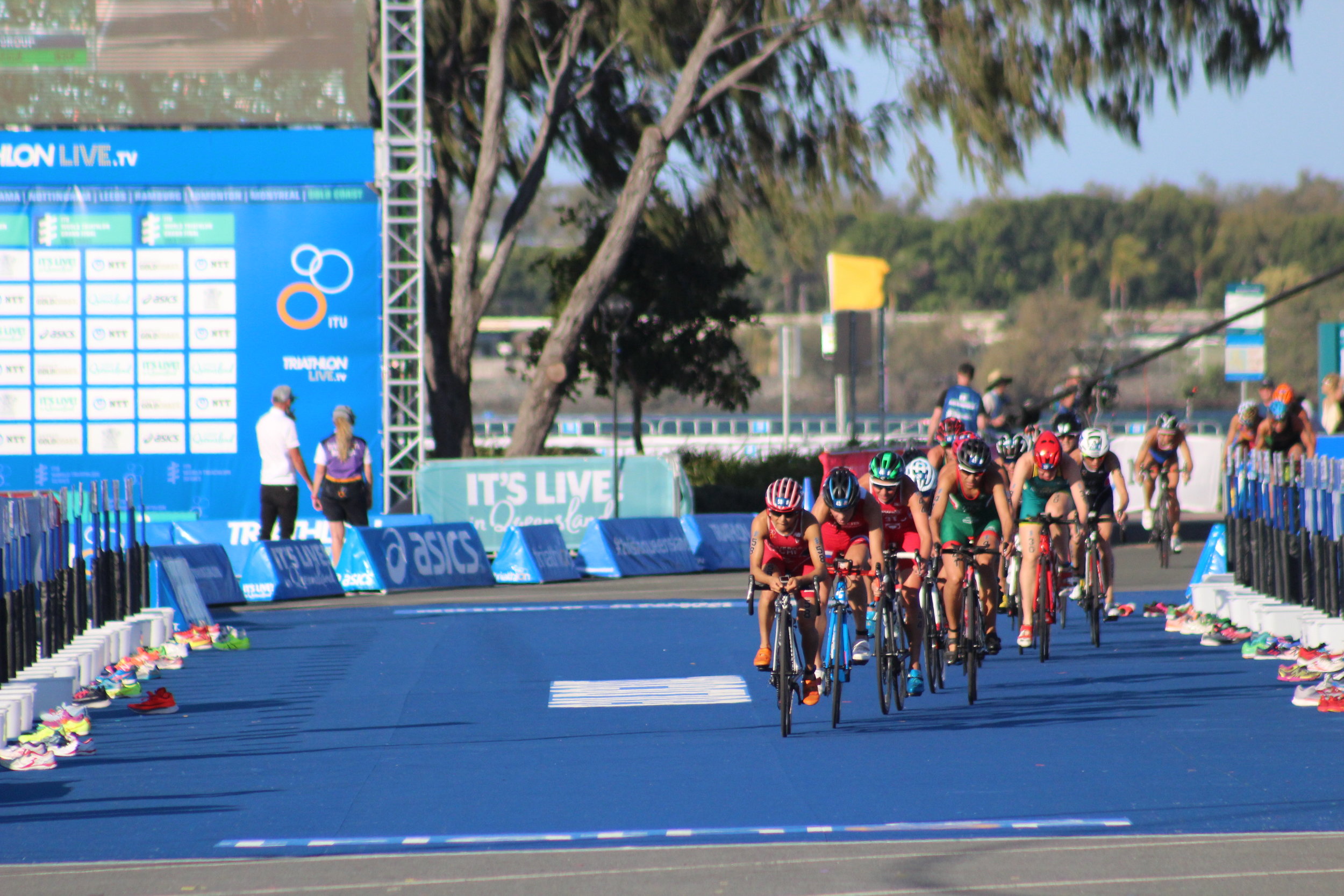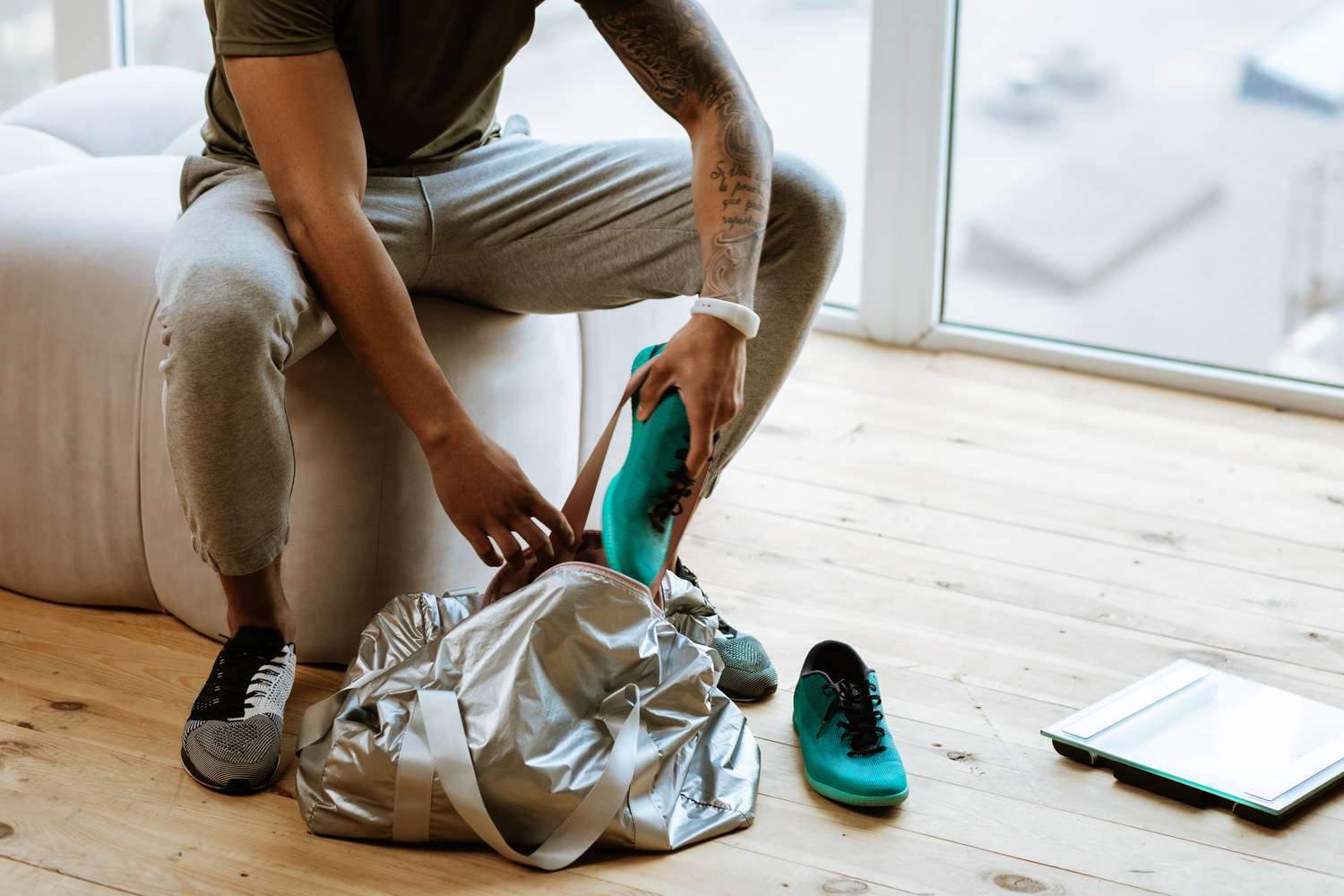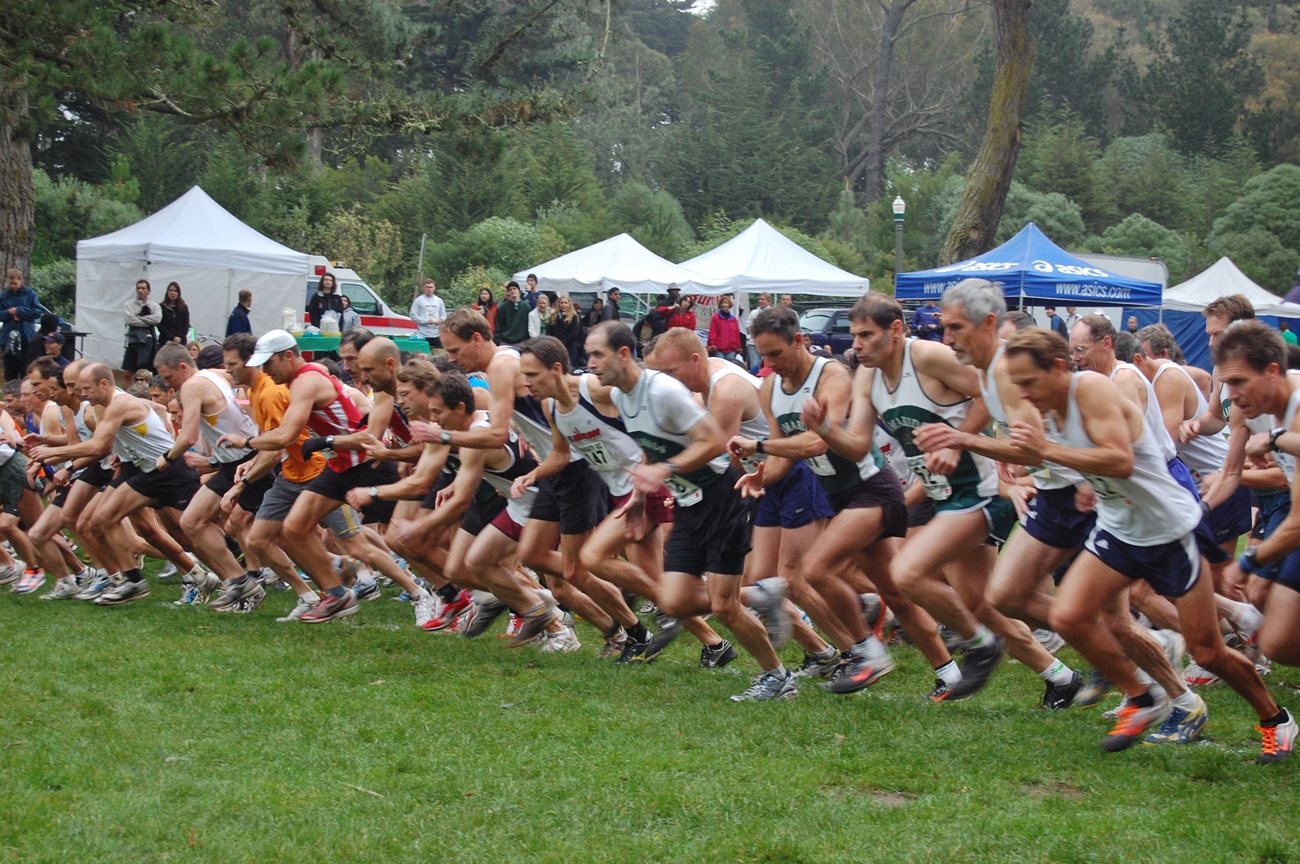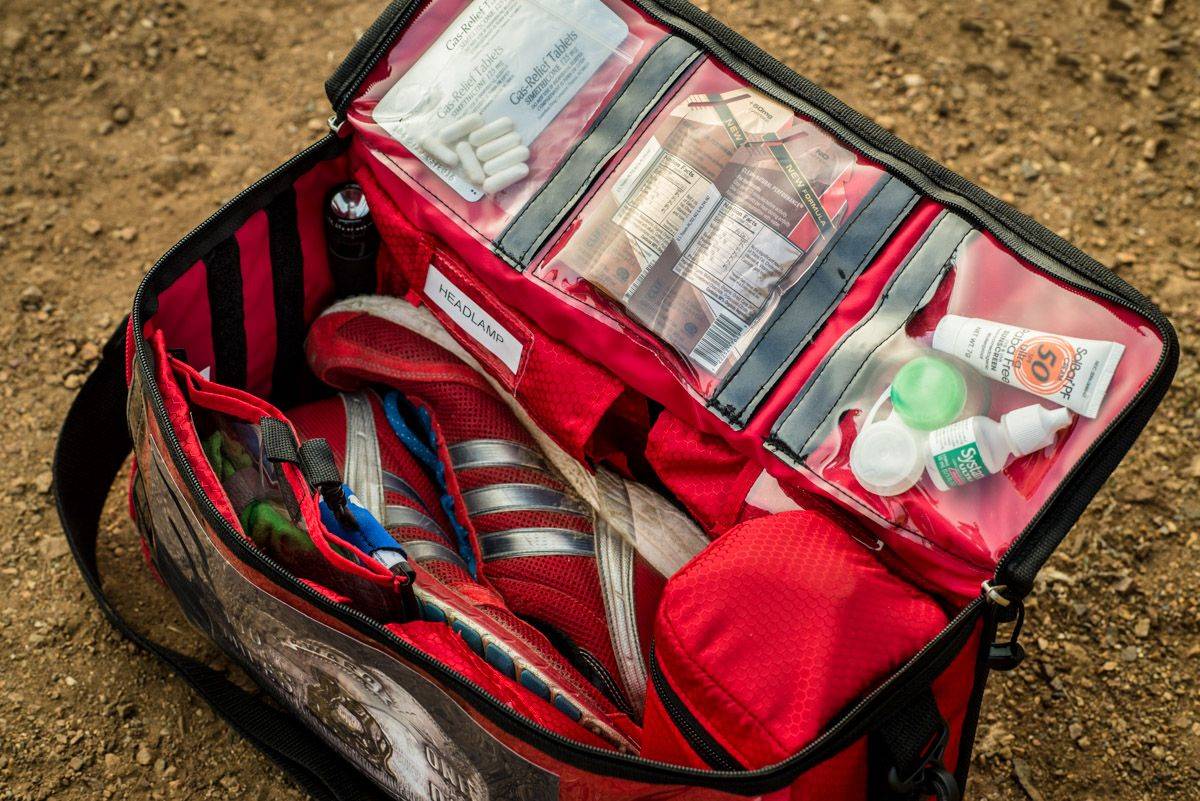Home>Misc>Featured>How To Carry Energy Gels During Obstacle Run
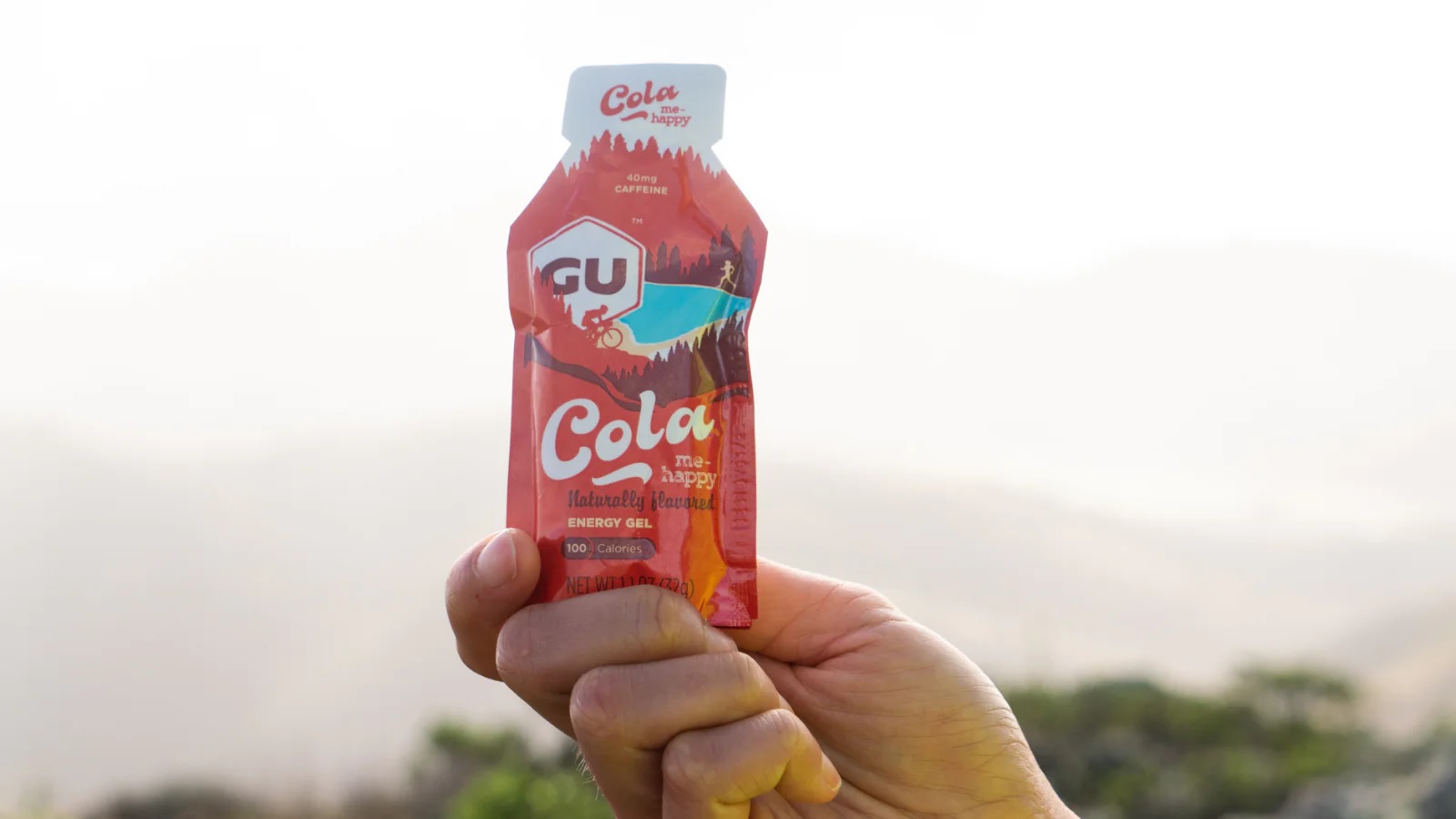

Featured
How To Carry Energy Gels During Obstacle Run
Published: October 15, 2023
Discover the best way to carry energy gels during your obstacle run. Get featured tips and techniques to fuel your performance and conquer any challenge!
Introduction
Welcome to the world of obstacle runs, where athletes push their limits and challenge themselves both mentally and physically. These races, filled with a variety of challenging obstacles, require participants to have optimum energy levels to perform their best. That’s where energy gels come in.
In this article, we will delve into the importance of using energy gels during obstacle runs and explore various strategies for carrying them with ease. Whether you’re a seasoned obstacle race enthusiast or a newbie looking for some guidance, this article will equip you with all the information you need to make the most of your energy gels during these demanding races.
Why Use Energy Gels in Obstacle Runs?
Obstacle runs, such as Tough Mudder, Spartan Race, and Warrior Dash, are intense physical challenges that demand exceptional endurance and stamina. These races consist of various obstacles that require explosive bursts of energy throughout the course. Sustaining high energy levels becomes crucial to navigating obstacles effectively and completing the race successfully.
Energy gels are a popular choice among athletes due to their convenient packaging and rapid absorption rates. They are typically packed with easily digestible carbohydrates, electrolytes, and sometimes caffeine, providing a quick energy boost to help athletes power through the course. Energy gels are designed to replenish glycogen stores and maintain blood sugar levels, enabling athletes to sustain their performance over a prolonged period.
Factors to Consider when Choosing Energy Gels
With a plethora of energy gel brands and flavors flooding the market, choosing the right gel can be overwhelming. Here are a few key factors to consider when selecting energy gels for your obstacle run:
- Ingredients: Check the ingredients list to ensure it aligns with your dietary preferences and restrictions. Look for gels that contain a balance of carbohydrates, electrolytes, and possibly caffeine depending on your needs.
- Flavor and Texture: Opt for flavors that you enjoy, as during a race, taste fatigue can make it challenging to consume gels that you find unpalatable. Additionally, consider the texture of the gel. Some prefer thicker gels while others prefer a more watery consistency.
- Packaging: Consider the packaging design and ease of use. Look for resealable pouches or tear-off tops that can be easily opened on-the-go.
Now that we’ve covered the importance of energy gels in obstacle runs and factors to consider when choosing them, let’s explore different strategies for carrying these gels during a race.
Why Use Energy Gels in Obstacle Runs
Obstacle runs, with their demanding physical challenges and unpredictable terrain, require athletes to sustain high energy levels to perform at their best. Energy gels are a go-to choice for many athletes participating in obstacle runs due to their convenience and effectiveness in providing a quick energy boost.
During obstacle runs, athletes face a variety of challenging elements such as climbing walls, crawling through mud pits, and navigating tough terrain. These activities demand quick bursts of energy and endurance. Energy gels, packed with easily digestible carbohydrates, electrolytes, and sometimes caffeine, offer a compact and efficient way to replenish glycogen stores, maintain blood sugar levels, and enhance endurance.
One of the key reasons athletes turn to energy gels is their rapid absorption rate. Unlike solid food, which can take time to digest and may cause discomfort while running, gels can be quickly absorbed into the bloodstream, providing an immediate energy boost. This makes them ideal for on-the-go consumption during obstacle runs, allowing athletes to refuel without interrupting their pace.
Another advantage of energy gels is their compact packaging. Most gels come in small, lightweight pouches that can be easily carried in pockets, race belts, or hydration packs without adding significant weight or bulk. This makes them a practical choice for obstacle runners who need to carry sufficient fuel without hindering their movement.
Energy gels are often designed to be palatable, offering a range of flavors to choose from. This is particularly beneficial during races where taste fatigue can pose a challenge. Being able to consume a gel that appeals to your palate ensures that you can continue refueling without any aversion to the taste, helping you maintain a steady supply of energy throughout the race.
In addition to carbohydrates and electrolytes, some energy gels may also contain caffeine. Caffeine has been shown to enhance endurance performance and reduce perceived exertion, making it a popular choice among athletes. However, it’s important to note that caffeine affects individuals differently, and it’s best to experiment with caffeine-containing gels during training to understand your body’s response.
By incorporating energy gels into your obstacle run fueling strategy, you can ensure that you have a readily available source of energy to meet the demands of the race. With their convenient packaging, rapid absorption rate, and range of flavors, energy gels provide a practical and effective solution for maintaining energy levels during these challenging events.
Factors to Consider when Choosing Energy Gels
With a wide variety of energy gel brands and flavors available in the market, choosing the right gel for your obstacle run can be overwhelming. To ensure you’re getting the most out of your fueling strategy, it’s important to consider several key factors when selecting energy gels:
1. Ingredients: Take a close look at the ingredients list of the energy gels you are considering. Look for gels that contain a balance of carbohydrates, electrolytes, and possibly caffeine, depending on your needs. The carbohydrate source should be easily digestible, such as maltodextrin or glucose, to ensure quick absorption and energy availability.
2. Flavors and Texture: Choose energy gels with flavors that you enjoy. During a long race, taste fatigue can set in, making it hard to consume gels with flavors that are unpalatable to you. Experiment with different flavors during training to identify your preferences. Additionally, consider the texture of the gel. Some gels have a thicker consistency, while others are more watery. Find a texture that works well for you and doesn’t cause discomfort while running.
3. Packaging: Evaluate the packaging design and ease of use of the energy gel. Look for gels that come in resealable pouches or have tear-off tops that can be easily opened while on the move. This ensures that you can access your fuel quickly without wasting time or making a mess.
4. Portability: Consider the size and weight of the energy gel packaging. Ideally, the gel should be compact and lightweight so that it can easily be carried in your pockets or fuel belt without weighing you down during the race. Look for gels that have minimal packaging but still offer a sufficient amount of fuel for your needs.
5. Dietary Restrictions: If you have any dietary restrictions or food allergies, make sure to check the ingredients list for any potential triggers. Many energy gel brands offer vegan, gluten-free, and allergen-free options to cater to a wide range of dietary needs. It’s essential to choose gels that align with your dietary preferences and restrictions to avoid any unwanted reactions during the race.
6. Cost-Effectiveness: Energy gels vary in price, so it’s important to consider your budget and the cost-effectiveness of the gels you choose. Look for value packs or bulk options that offer a better price per gel. However, keep in mind that the lowest-priced option might not always deliver the best quality, so strike a balance between quality and affordability.
By considering these factors when selecting energy gels, you can ensure that you choose gels that align with your nutritional needs, taste preferences, and budget. Finding the right energy gel will enhance your fueling strategy and contribute to your overall performance and enjoyment during obstacle runs.
Strategies for Carrying Energy Gels during Obstacle Runs
When participating in obstacle runs, it’s essential to have a reliable strategy for carrying your energy gels to ensure easy access and convenience during the race. Here are a few strategies to consider:
Option 1: Using a Race Belt: One of the most popular methods is to use a race belt with gel loops or pockets. These belts typically feature elastic loops or small pouches designed to securely hold energy gels. Simply slide the gel into the loop or pouch for easy access during the race. Race belts are lightweight and can be worn around the waist, providing a hands-free solution for carrying your gels.
Option 2: Utilizing a Hydration Pack with Gel Pockets: If you prefer to carry water or electrolyte drinks along with your energy gels, a hydration pack with gel pockets is a great option. These packs come with dedicated elasticized pockets on the shoulder straps or waist belt, allowing you to store your gels within arm’s reach. Simply slip the gels into the pockets before the race, and you’ll have quick access to them whenever you need a fuel boost.
Option 3: Securing Gels with Tape or Elastic Bands: For those who prefer a more minimalist approach, you can use tape or elastic bands to secure your energy gels directly to your race outfit or gear. Place a piece of tape or wrap an elastic band around the gel packaging to keep it securely attached to your waistband, wristband, or the strap of your hydration pack. This method allows for easy access and reduces the need for additional gear.
Option 4: Using a Wristband or Arm Strap: Another option is to use a wristband or arm strap with gel loops. These bands are specially designed to hold energy gels and can be worn around the wrist or upper arm. They provide a convenient and easily accessible location for storing your gels during the race. This method is especially useful if you prefer having your gels within arm’s reach.
Option 5: Creating a Homemade Gel Holder: If you’re feeling crafty, you can create a homemade gel holder using items like elastic bands, safety pins, or fabric scraps. Attach these DIY holders to your race outfit or gear, providing a customized solution for carrying your gels. While it may require some creativity and experimentation, it can be a cost-effective and customizable option.
When choosing a strategy for carrying your energy gels, consider factors such as comfort, ease of access, and the level of mobility you require during the race. Experiment with different methods during your training runs to find the one that works best for you.
Creatively finding a way to carry your energy gels will ensure that they are readily available when you need them, without compromising your performance or impeding your movement during the demanding obstacles of the race.
Option 1: Using a Race Belt
A race belt is a popular and convenient option for carrying energy gels during obstacle runs. These belts, made of lightweight and stretchy materials, are designed to be worn around the waist. They typically feature elastic loops or small pouches that securely hold energy gels, providing easy access and eliminating the need to reach into pockets or bags. Here’s what you need to know about using a race belt:
Advantages:
- Hands-Free Solution: One of the key advantages of using a race belt is that it allows you to carry your energy gels hands-free. This means you can focus on navigating obstacles without worrying about holding or fumbling with your gels.
- Secure and Convenient: Race belts with gel loops or pouches securely hold your energy gels in place, so there’s no risk of them falling out during the race. This ensures that your gels are easily accessible whenever you need a quick energy boost.
- Minimalistic Design: Race belts are lightweight and low-profile, adding minimal bulk to your race gear. They are designed to provide a comfortable and secure fit, without interfering with your movements during the race.
Tips for Using a Race Belt:
- Organize and Allocate Gels: Before the race, decide how many gels you’ll need and distribute them evenly around the race belt. This will ensure that the weight is evenly distributed and prevent any discomfort or bouncing during the run.
- Practice Accessing Gels: During training runs, practice reaching for and accessing your gels on the race belt. Familiarize yourself with the locations of each gel to minimize the time spent looking for the right one during the race.
- Consider Additional Storage: If you require more energy gels than your race belt can accommodate, consider pairing it with a small pouch or pocket attached to your waistband or gear. This will provide extra storage space for your gels and ensure you have an ample supply for the race.
- Ensure a Secure Fit: Adjust the race belt to ensure a snug and comfortable fit around your waist. This will prevent it from bouncing or shifting during the race, ensuring that your gels remain secure and easily accessible.
Using a race belt to carry your energy gels offers a hands-free and convenient solution to keep your fuel readily available during obstacle runs. With a secure and minimalist design, it allows you to focus on the race while ensuring quick and easy access to your gels when you need them the most.
Option 2: Utilizing a Hydration Pack with Gel Pockets
A hydration pack with gel pockets is an excellent option for obstacle runs, especially for longer races or those where staying hydrated is crucial. These packs are designed to carry water or electrolyte drinks, and they often come with dedicated elasticized pockets on the shoulder straps or waist belt for storing energy gels. Here’s what you need to know about utilizing a hydration pack with gel pockets:
Advantages:
- All-in-One Solution: A hydration pack with gel pockets provides a convenient all-in-one solution for carrying both your hydration and energy gels. You can keep your gels within arm’s reach, eliminating the need to reach into pockets or bags to access them.
- Easily Accessible: The gel pockets on a hydration pack are strategically placed for easy access. You can quickly grab a gel while on the move, allowing you to refuel without interrupting your pace.
- Additional Storage: In addition to gel pockets, hydration packs often come with other compartments or pockets for storing items such as keys, energy bars, or other essentials. This provides extra storage space for your gear and ensures you have everything you need throughout the race.
Tips for Utilizing a Hydration Pack with Gel Pockets:
- Properly Organize Your Gear: Before the race, organize your hydration pack and ensure that your gels are easily accessible in the gel pockets. Place them in a way that allows you to quickly grab them without fumbling or slowing down.
- Practice Retrieving Gels: During training runs, practice reaching for and retrieving your gels from the gel pockets of your hydration pack. This will help you familiarize yourself with the location and ensure smooth and effortless access during the race.
- Monitor Hydration and Refill as Needed: Remember to stay properly hydrated during the race by regularly sipping from your hydration pack. Monitor your fluid levels and refill as needed at aid stations or designated refill points to ensure you have ample hydration throughout the race.
- Consider Cleaning and Maintenance: After each race, clean your hydration pack thoroughly to remove any residual gel or dust. This will help prolong its lifespan and ensure that it remains in good condition for future use.
Utilizing a hydration pack with gel pockets offers a convenient and efficient way to carry both your hydration and energy gels during obstacle runs. With easy accessibility and additional storage space, you can stay hydrated and fuelled throughout the race, allowing you to perform at your best even in the most challenging conditions.
Option 3: Securing Gels with Tape or Elastic Bands
If you prefer a more minimalist approach or don’t want to invest in additional gear, securing your energy gels with tape or elastic bands can be an effective and budget-friendly solution. This method allows you to attach the gels directly to your race outfit or gear, ensuring easy access and reducing the risk of losing them during the race. Here’s what you need to know about securing gels with tape or elastic bands:
Advantages:
- Simplicity and Versatility: Using tape or elastic bands to secure your gels offers a simple and versatile solution. You can attach the gels to various parts of your race gear, such as your waistband, wristband, or even the straps of your hydration pack.
- Cost-Effective: This method doesn’t require any additional gear purchases, making it a budget-friendly option for carrying your gels during the race.
- Ease of Access: Taping or using elastic bands allows for quick and easy access to your gels whenever you need a boost of energy. Simply remove the tape or release the band to access your gel and consume it on the go.
Tips for Securing Gels with Tape or Elastic Bands:
- Choose the Right Tape or Elastic Bands: Opt for strong, durable tape or elastic bands that will securely hold your gels in place throughout the race. Make sure they are not too tight to constrict blood flow or movement.
- Strategically Position the Gels: Attach the gels in a way that allows for easy access while minimizing interference with your movement. Experiment with different placements during training runs to find the most comfortable and accessible position for your gels.
- Ensure Adequate Attachment: Double-check that the gels are securely attached to your gear before the race. You don’t want them to become loose or fall off during the intense and dynamic movements of the race.
- Consider Additional Protection: To prevent your gels from getting damaged by sweat or dirt, consider placing them in a small plastic bag or wrapping them in cling film before securing them with tape or elastic bands.
Securing your energy gels with tape or elastic bands is a simple yet effective way to carry them during obstacle runs. Whether you choose to attach them to your waistband, wristband, or gear, this method ensures that your gels are easily accessible, securely held in place, and won’t hinder your performance in any way.
Option 4: Using a Wristband or Arm Strap
If you prefer to keep your energy gels within arm’s reach, using a wristband or arm strap with gel loops can be a convenient option during obstacle runs. These specially designed bands are worn around the wrist or upper arm and provide a secure and easily accessible location for storing your gels. Here’s what you need to know about using a wristband or arm strap:
Advantages:
- Convenient Accessibility: With your gels positioned on your wrist or arm, they are easily accessible whenever you need a quick energy boost. This saves you the hassle of reaching into pockets or bags during the race, allowing you to maintain your momentum.
- Secure and Hands-Free: Wristbands or arm straps with gel loops are designed to securely hold your energy gels in place, ensuring they won’t get lost or fall out during the race. This gives you peace of mind and allows you to focus on the obstacles ahead.
- Minimalist Design: Wristbands and arm straps are lightweight and have a minimalist design, minimizing any extra bulk or weight during the race. They won’t restrict your movements and provide a comfortable and unobtrusive solution for carrying your gels.
Tips for Using a Wristband or Arm Strap:
- Choose the Right Fit: Ensure that the wristband or arm strap fits snugly but comfortably. It should be tight enough to hold the gels securely in place but not so tight that it restricts blood flow or causes discomfort.
- Organize Gels for Easy Access: Prior to the race, organize your gels on the wristband or arm strap in a way that allows for quick and easy access. Arrange them so that you can easily identify and retrieve the gel you need without fumbling or slowing down.
- Practice Grabbing Gels: During your training runs, practice reaching for and grabbing the gels from the wristband or arm strap. This will help you develop muscle memory and ensure smooth and effortless access during the race.
- Consider Sweat Protection: To protect your gels from sweat or moisture, consider using a sweatband or applying a layer of sweat-resistant tape underneath the wristband or arm strap. This will help keep your gels dry and prevent any potential damage.
Using a wristband or arm strap with gel loops offers a convenient and easily accessible method for carrying your energy gels during obstacle runs. With their secure and minimalist design, they provide a hands-free solution that ensures your gels are within reach whenever you need that extra burst of energy to conquer the obstacles that lie ahead.
Option 5: Creating a Homemade Gel Holder
If you enjoy getting crafty and don’t mind a do-it-yourself approach, creating a homemade gel holder can be a fun and cost-effective way to carry your energy gels during obstacle runs. With a little creativity and resourcefulness, you can design a custom-made holder that suits your preferences and gear. Here’s what you need to know about creating a homemade gel holder:
Advantages:
- Customization: Creating your own gel holder allows you to tailor it to your specific needs and gear. You can personalize its design, size, and placement to ensure it fits your race outfit or gear perfectly.
- Cost-Effective: Making a homemade gel holder can be more cost-effective than purchasing a specialized gear item. Using materials you already have or finding affordable alternatives can save you money while still providing a functional solution.
- Resourcefulness: Designing and creating a homemade gel holder allows you to exercise your creativity and resourcefulness. It gives you the opportunity to repurpose items or materials and come up with unique solutions for carrying your gels.
Tips for Creating a Homemade Gel Holder:
- Choose Suitable Materials: Select materials that are lightweight, durable, and comfortable against the skin. Consider options such as elastic bands, fabric scraps, Velcro, or any other items that can securely hold your gels in place.
- Consider Placement: Determine where on your race outfit or gear the gel holder will be most convenient and accessible. Experiment with different placements during your training runs to find the position that works best for you.
- Test Durability: Prior to the race, ensure that your homemade gel holder is secure and will not come loose or fall apart during the obstacles. Give it a trial run during a training session to evaluate its durability and make any necessary adjustments.
- Keep it Lightweight and Unobtrusive: Avoid adding unnecessary weight or bulk with your homemade gel holder. Aim for a minimalist design that won’t restrict your movements or become a hindrance during the race.
Creating a homemade gel holder allows you to add a personal touch to your race gear while providing a practical solution for carrying your energy gels. It’s a great opportunity to get creative and resourceful, turning ordinary items into functional gel holders that perfectly suit your needs for the race ahead.
Tips for Efficiently Consuming Energy Gels during Obstacle Runs
Consuming energy gels strategically during obstacle runs can significantly impact your performance and endurance. To get the most out of your gels and ensure efficient fueling during the race, consider the following tips:
- Stay Hydrated: Hydration is crucial during obstacle runs, especially when consuming energy gels. Drink water or electrolyte beverages alongside your gels to help with absorption and prevent any potential stomach discomfort.
- Follow a Schedule: Create a gel consumption schedule based on the duration of the race and the intensity of the obstacles. Plan when you will take your gels to ensure a steady and consistent supply of energy throughout the race.
- Start Early: Consume your first gel early in the race, ideally within the first hour. This allows your body to start absorbing the carbohydrates and replenishing glycogen stores before you start feeling fatigued.
- Read the Instructions: Familiarize yourself with the specific instructions and recommended serving sizes for your chosen energy gels. Follow these guidelines to ensure proper fueling and avoid overconsumption.
- Don’t Rely on Gels Alone: Energy gels are a valuable source of fuel, but they should not be your only form of nutrition during obstacle runs. Incorporate other easily digestible snacks or whole foods, such as energy bars or bananas, for a more complete fueling strategy.
- Avoid Overconsumption: While it’s important to fuel correctly, avoid consuming too many gels in a short period. Overconsumption can lead to digestive discomfort or a sudden energy crash. Stick to your planned gel consumption schedule and listen to your body’s needs.
- Experiment during Training: Use your training sessions to experiment with different brands, flavors, and consumption strategies. This allows you to find what works best for you and avoid any unexpected adverse effects during the actual race.
- Practice Consumption on the Move: During training, practice consuming gels while on the move. Simulate the race conditions as closely as possible to refine your gel consumption technique and minimize any potential slowdowns during the race.
- Pay Attention to Your Body: Stay tuned in to how your body responds to the gels during training runs. Note any changes in energy levels, digestion, or overall performance. This awareness will help you make adjustments to your gel consumption strategy as needed.
- Listen to your Tastebuds: While it’s important to prioritize functionality and nutritional value, don’t underestimate the importance of enjoying the taste of your energy gels. Choose flavors that are palatable to you to make consuming them a pleasant experience.
By implementing these tips, you can effectively optimize your gel consumption during obstacle runs. Remember, each racer’s fueling needs may vary, so it’s essential to find what works best for you through experimentation and practice. Proper gel consumption will help fuel your performance, keep you energized, and get you closer to conquering those challenging obstacles with confidence.
Conclusion
Obstacle runs are thrilling and physically demanding events that require proper fueling to optimize performance and endurance. Energy gels have become a popular choice among athletes participating in these races due to their convenience, rapid absorption, and ability to provide a quick energy boost. By incorporating energy gels into your obstacle run fueling strategy, you can ensure that you have a readily available source of energy to meet the demands of the race.
When choosing energy gels, consider factors such as ingredients, flavors, packaging, and dietary restrictions to find the right gels that suit your needs. Experimenting with different brands and flavors during training runs will help you identify your preferences and avoid taste fatigue during the race.
Carrying energy gels during obstacle runs requires a well-thought-out strategy. Whether you choose to use a race belt, a hydration pack with gel pockets, secure gels with tape or elastic bands, utilize a wristband or arm strap, or create a homemade gel holder, the goal is to ensure easy access and convenient consumption during the race.
Lastly, consuming energy gels efficiently during obstacle runs is crucial for sustained performance. Remember to stay hydrated, follow a consumption schedule, start fueling early, and supplement gels with other food sources. Practice gel consumption during training and listen to your body’s needs and responses to adjust your strategy accordingly.
Now armed with this knowledge and these tips, you can confidently navigate your next obstacle run with the energy and endurance needed to overcome any hurdle that comes your way. So gear up, fuel up, and embrace the challenge of conquering those obstacles with the power of energy gels by your side!

